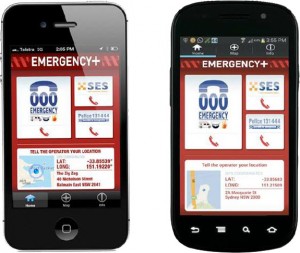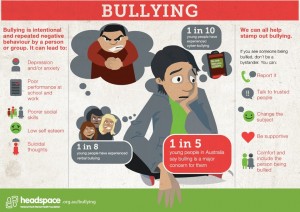
10 December, 2013 | National News, Safety and Security
[mp_row]
[mp_span col=”12″]
[mp_row_inner]
[mp_span_inner col=”12″]

Emergency+ App
Emergency services have launched a new smartphone app to help Australians call the right number for help in emergency and non-emergency situations.
Emergency+ was launched today by the Minister for Justice, Michael Keenan, at the City of Sydney Fire Station.
Developed by the Triple Zero Awareness Work Group (TZAWG), a national body that represents emergency call-taking agencies and their government and industry partners throughout Australia, the app was developed in response to a number of problems experienced by emergency call-takers and emergency services officers.
The TZAWG has identified that more than 66% of incoming calls to Triple Zero (000) are now made from mobile phones.
However, mobile callers often do not know exactly where they are, meaning call-processing times are longer and call-takers are then unavailable to take the next incoming emergency call.
Operational Communications and Information Commander, Assistant Commissioner Peter Barrie, said the most critical piece of information emergency call-takers need is the exact location of the caller.
“If a Triple Zero (000) operator doesn’t know where the caller is, they can’t send help,” Assistant Commissioner Barrie said.
“Location is the first and most important thing we need to know. If we at least have that, we always have a starting point.”
The Emergency+ app uses the existing GPS functionality of smartphones to enable callers to provide emergency call-takers with their location information as determined by their smartphone.
When activated, the built-in accessibility features of a smartphone will describe aloud what appears on-screen, so a caller can use the app without seeing it.
Research also shows that few people know the State Emergency Services (SES) 132 500 or Police Assistance Line (PAL) 131 444 numbers, which means their default action is to call Triple Zero, needlessly tying up emergency call-takers.
The Emergency+ app provides users with the contact numbers and a short explanation of when to call the non-emergency numbers such as the Police Assistance Line and the SES national number.
This is to help members of the public dial the correct number, and reduce the number of calls to the Triple Zero service that should be directed to another service.
The Emergency+ app is available, free of charge, on iOS and Android devices through the Google Play Store and Apple App Store.


The Emergency+ training video is available online on the Fire & Rescue NSW YouTube page:
[/mp_span_inner]
[/mp_row_inner]
[mp_row_inner]
[mp_span_inner col=”12″]
[mp_video src=”https://www.youtube.com/watch?v=hThHoRNhEnQ”]
[/mp_span_inner]
[/mp_row_inner]
[/mp_span]
[/mp_row]

4 October, 2013 | National News, Safety and Security

Product Safety Week 2013 is an initiative by Product Safety Australia and the ACCC
Product Safety Week is on during 7–14 October 2013, with activities happening around Australia and online to raise awareness about making safe, buying safe and using safe products.
There’s something for everyone during Product Safety Week – consumers and businesses alike: parents, kids, safety experts, compliance professionals, small, medium and big businesses, and anyone else who makes, buys or uses consumer goods.
Find out more about Product Safety Week on their website.

2 September, 2013 | National News, Safety and Security

National Child Protection Week 2013
National Child Protection Week is a national campaign held annually throughout Australia to raise awareness of child abuse prevention.
The objectives of the week are to raise the profile of all issues connected with child protection, including child abuse prevention, treatment, research, education, service provision and support for children, young people and families.
National Child Protection Week also aims to create an Australia-wide umbrella focus for child protection, allowing government and non-government agencies to present a cooperative and coordinated community oriented campaign.
When a child is abused, the physical and mental pain can last a lifetime. Sadly, according to the National Association for the Prevention of Child Abuse and Neglect (NAPCAN) more than 30,000 Australian children are abused or neglected every year.
Victims of child abuse have an increased risk of depression and suicide, substance addiction, poor educational outcomes and antisocial or criminal behaviour.
Find out more on the NAPCAN website or Facebook page.

17 June, 2013 | Safety and Security

National Consumer Fraud Week 2013
Australian consumers are increasingly going online to buy goods and services, taking advantage of the speed, convenience and greater choice that the internet can offer. Unfortunately scammers like shopping online for their victims too.
Scammers are increasingly sophisticated in how they deliver scams, taking advantage of new technologies and communication methods to try and slip under your radar. Scammers exploit the anonymous nature of the web to target Australians buying and selling online.
National Consumer Fraud Week 2013 is all about helping Australians to ‘outsmart the scammers’ by staying one click ahead!
Online shopping scams target both buyers and sellers, with the two most common scams being:
Classified ad scams – a scammer posts a fake ad on a legitimate classifieds website for cheaply priced popular items. If a consumer shows interest in an item, the scammer will claim that the goods will be delivered following receipt of payment. If the consumer pays, they will not receive the goods or be able to contact the seller.
Overpayment scams – a scammer will respond to a seller’s ad with a generous offer and will then ‘accidentally’ overpay. The scammer will ask the seller to refund the excess amount by money transfer in hope that the seller will transfer the money before they discover that the scammer’s cheque has bounced or that the money order was phony. The seller will lose the money, as well as the item they were selling, if they have already sent it on to the scammer.
Stay one click ahead of the scammers – visit the SCAMwatch website to find out more about how scams work, how to protect yourself and what to do if you’ve been scammed.
Fill out the 2013 scam survey & help in the fight against scams!

15 March, 2013 | Safety and Security

Headspace Anti-Bullying Day Info Graphic
Cyberbullying can be an upsetting experience. Check out the infographic from our friends at headspace and have a look at the ThinkUKnow website (https://www.thinkuknow.org.au/kids/helpcyber.asp) for info on what to do if you are bullied online.
What does the law have to say?
Although bullying is not a specific criminal offence in Australian law, criminal and civil laws can apply in terms of, for example, harassment or threatening behaviour, and particularly relevant for cyberbullying – threatening and menacing communications.
Who should I talk to?
Tell an adult you trust about the cyberbullying. This could be a parent or carer, a teacher at your school, an aunt or uncle. If you tell someone they can help make it stop. The records you have saved can then be passed onto the adult you have told.
You should also talk to someone if you’ve been cyberbullying others as well. Chance are, you’re dealing with some heavy stuff and that might explain why you are tempted to cyberbully or can’t help cyberbullying others. You need help and support too!
If you feel you can’t talk to someone in person just yet, call Lifeline (13 11 14) or Kids Helpline (1800 55 1800). For more information and advice you can visit these sites:

7 March, 2013 | Safety and Security

Recall of Kmart Homemaker 1 litre and 500 ml glass measuring jugs
There’s been a recall on Kmart Homemaker 1 litre and 500 ml glass measuring jugs which can break unexpectedly posing risks of injury and property damage.
Read more on the ACCC Recall website.








